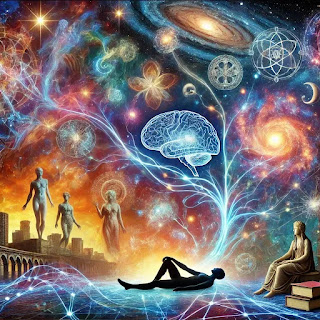Art Therapy, a therapeutic technique that helps individuals express themselves
Art therapy is a form of psychotherapy that uses creative expression—such as drawing, painting, sculpture, and other art forms—as a therapeutic technique to help individuals express themselves. It focuses on the idea that the creative process of making art can help improve a person’s emotional well-being, mental health, and overall psychological functioning.
Key Aspects of Art Therapy:
1. Creative Expression: Art therapy allows individuals to express thoughts and feelings that might be difficult to articulate with words. It taps into non-verbal communication and can access emotions stored in the subconscious.
2. Psychological Healing: Creating art can reduce stress, increase self-esteem, manage anxiety, and help with trauma recovery. It is often used for people dealing with depression, PTSD, chronic illnesses, or those undergoing significant life changes.
3. Guided by a Therapist: Art therapy is conducted under the guidance of a trained art therapist who helps the individual interpret the artwork, connect it to their emotions, and explore underlying issues. The focus is not on the quality of the art but on what the process of creating reveals about the person.
4. Self-Discovery and Insight: Art can help individuals gain a deeper understanding of their own emotions and thoughts. It encourages self-reflection and can uncover feelings that were previously suppressed or unconscious.
5. Types of Media Used:
Painting and Drawing: Most commonly used as it allows individuals to freely express emotions through colors, shapes, and patterns.
Sculpture: Three-dimensional work may help people process tactile sensations and offer another way to express feelings.
Collage: Combining various materials can help reflect a person’s inner world and complex emotions.
Photography: For some, taking or altering photos can serve as a powerful method of self-expression.
6. Applications:
Mental Health Disorders: Useful for people dealing with anxiety, depression, bipolar disorder, and schizophrenia.
Trauma and PTSD: Individuals who have experienced abuse, violence, or other traumas may use art therapy to process and heal from these events.
Children and Adolescents: Because young people often have difficulty expressing emotions verbally, art therapy can be particularly helpful.
Chronic Illness and Disabilities: Helps individuals cope with the emotional impact of living with long-term physical illnesses or disabilities.
7. Goals:
* Improve emotional regulation
* Enhance self-awareness
* Build coping skills
" Foster resilience and empowerment
Techniques in Art Therapy:
Free Drawing: Spontaneous creation of artwork without any set rules or boundaries.
Mandala Drawing: Creating circular, structured designs can promote relaxation and focus.
Visualization: Using guided imagery and creating a visual representation of feelings or memories.
Narrative Art: Combining art with storytelling to explore personal experiences.
Benefits of Art Therapy:
Emotional Release: Helps people express emotions they may not be able to speak about.
Stress Reduction: The act of creating art can have a calming effect, helping reduce anxiety and stress levels.
Improved Cognitive Functions: Can improve problem-solving skills and memory, particularly in older adults.
Social Connection: In group settings, art therapy can foster a sense of community and reduce feelings of isolation.
Art therapy provides a safe, supportive space for individuals to explore their emotions through creativity, leading to personal growth and healing.




Comments